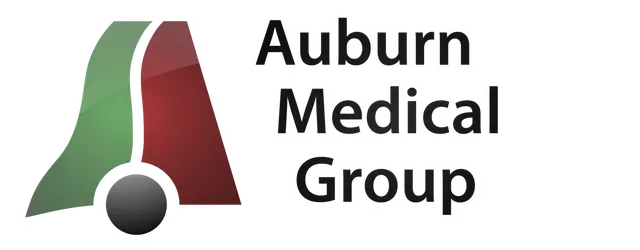Remote patient monitoring (RPM)
Remote Patient Monitoring (RPM) Services Offered In Auburn, CA
Remote Patient Monitoring (RPM) is a rapidly emerging field in healthcare that allows healthcare providers to monitor and track their patients’ health data from a distance. RPM technology enables healthcare professionals to remotely monitor a patient’s health condition and intervene if necessary. This method of healthcare delivery has been gaining popularity as it allows patients to receive medical attention from the comfort of their homes.
READ MORE
Remote Patient Monitoring is made possible by the use of connected medical devices that transmit a patient’s health information to a healthcare provider. These devices can measure various parameters such as blood pressure, blood glucose levels, heart rate, oxygen saturation, and body temperature, among others. RPM can be used to monitor a wide range of health conditions, including heart disease, diabetes, chronic obstructive pulmonary disease (COPD), and asthmaThe data generated by these devices is transmitted to the healthcare provider through a secure digital platform, where it is analyzed and interpreted. Healthcare professionals can use this information to make informed decisions about the patient’s care, which can lead to better health outcomes.
One of the major advantages of RPM is that it can help reduce hospital admissions and readmissions. Patients with chronic conditions often require frequent monitoring, and RPM technology can help detect early signs of complications, enabling healthcare providers to intervene before the patient’s condition worsens. This proactive approach to healthcare can help prevent unnecessary hospital admissions, which can be costly and disruptive for patients.
Here are some of the benefits of remote patient monitoring:
- Improved patient outcomes: RPM can help patients stay healthier and avoid costly emergency room visits.
- Reduced healthcare costs: RPM can help providers manage patients more effectively and reduce the risk of complications, which can save money on healthcare costs.
- Improved patient satisfaction: Patients who use RPM often report being more satisfied with their care.
- Increased access to care: RPM can help patients who live in rural areas or who have difficulty getting to the doctor’s office receive the care they need.
RPM technology can also improve patient engagement and satisfaction. Patients can take an active role in their healthcare by using connected medical devices to monitor their health status. By regularly tracking their vital signs, patients can identify any changes or trends and report them to their healthcare provider. This increased engagement and communication between patients and healthcare providers can lead to improved health outcomes and patient satisfaction.
Another advantage of RPM is that it can help healthcare providers optimize their workflows. Healthcare professionals can monitor multiple patients simultaneously, which can help save time and resources. This can be particularly beneficial in remote or underserved areas where access to healthcare is limited. In conclusion, Remote Patient Monitoring is a promising field that has the potential to revolutionize healthcare delivery. By using connected medical devices to remotely monitor patients’ health data, healthcare providers can detect early signs of complications and intervene before the patient’s condition worsens. This can lead to better health outcomes, improved patient engagement, and reduced healthcare costs.
Watch our YouTube video to see more about RPM.
Call 530 886 8630 to see if you qualify for RPM.

What Is RPM?
Remote patient monitoring uses digital technology to measure or detect vital medical information from anywhere you are. Then, the device sends that information to the team at Auburn Medical Group using wireless connectivity.
You may wear a remote device continuously for some conditions. But remote monitoring is also used occasionally to check biomarkers as needed for your condition.
What information does remote patient monitoring collect?
Remote patient monitoring devices can obtain information about:
- Heart rate
- Respiration rate
- Body temperature
- Blood oxygen
- Heart’s electrical activity (electrocardiogram or ECG)
- Brain waves (electroencephalogram or EEG)
- Blood sugar
- Movement
- Seizures
- Weight
Certain devices that monitor movement can detect when you fall and alert your provider and other family members. Other movement monitors recognize gestures so you can signal the device if you need help.
Remote patient monitoring works for many chronic health conditions, ranging from hypertension to diabetes, cardiovascular disease, and epilepsy.
What are the different types of remote monitors?
There are a few basic types of remote monitors, including:
- Patches
- Chest straps
- Upper arm bands
- Wristbands
- Finger or toe clip
- Monitors in clothing
All of the devices contain sensors that pick up specific information. For example, continuous glucose monitors detect sugar in the fluids surrounding cells.
How does remote patient monitoring work?
Every device comes with an app and the equipment needed to obtain medical information. Some devices primarily rely on patches that adhere to your skin. You could also get a blood pressure cuff, a weight scale, thermometer, glucometer (measures blood sugar), or pulse oximeter (measures oxygen).
The team at Auburn Medical Group teaches you how to use your monitor. If information goes to your smartphone, they also teach you what it means, how to interpret the information, and the steps you may need to take.
If you don’t wear a continuous monitor, the team may give you a schedule to follow, or your device may alert you when it’s time to do something like check your blood pressure.
Call Auburn Medical Group or schedule an appointment online today to learn more about remote patient monitoring.
For more information regarding remote patient monitoring, please visit our YouTube channel.
